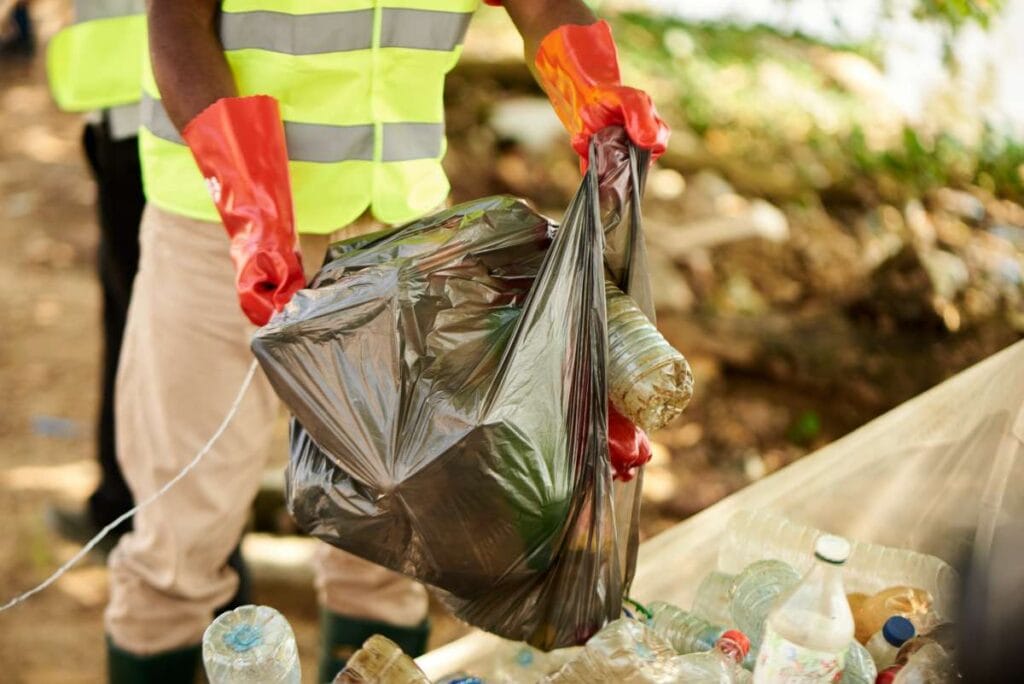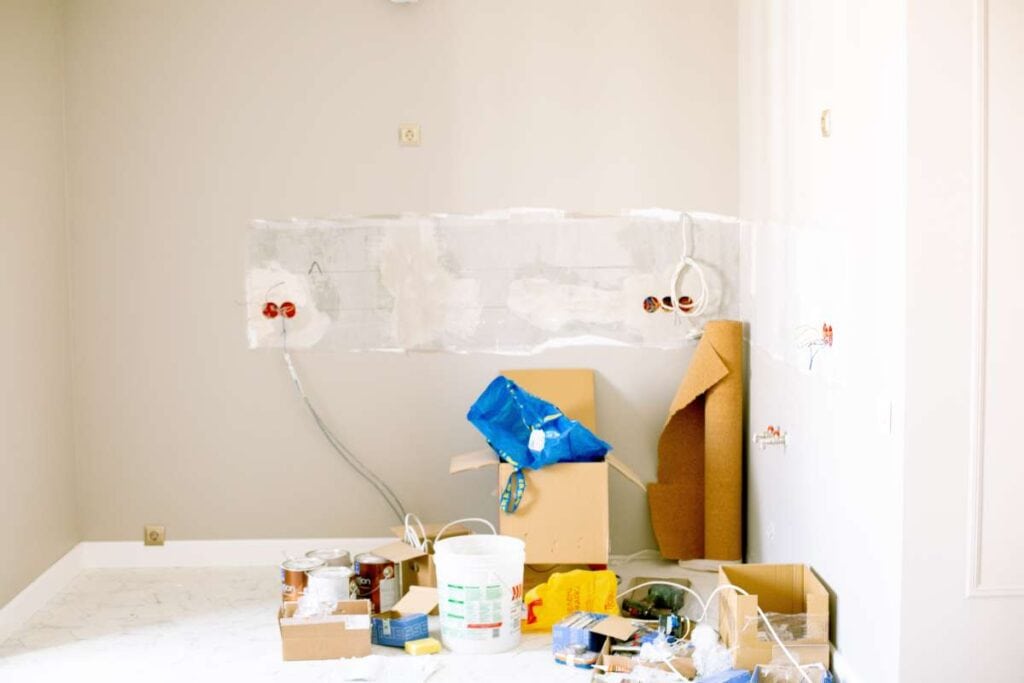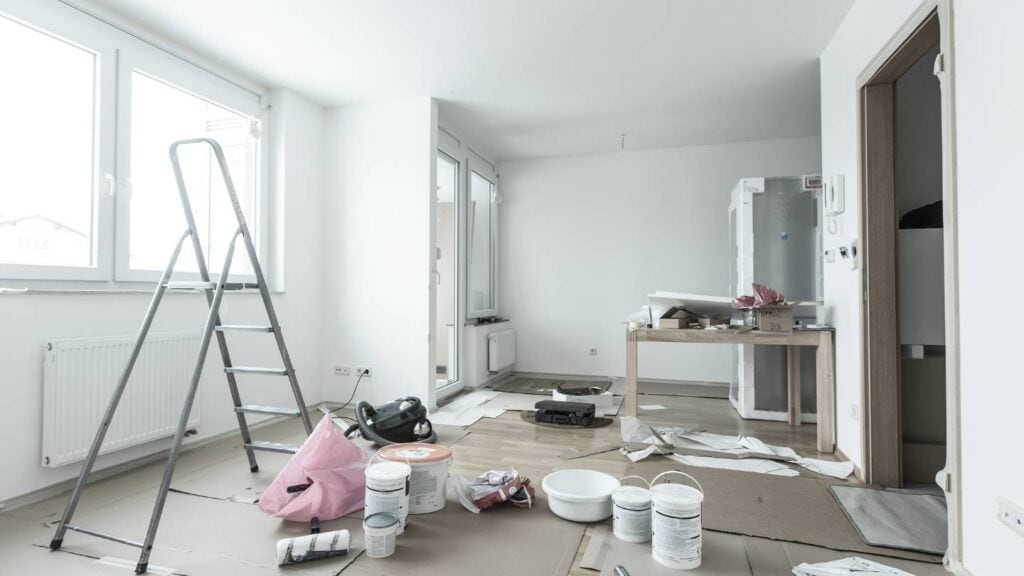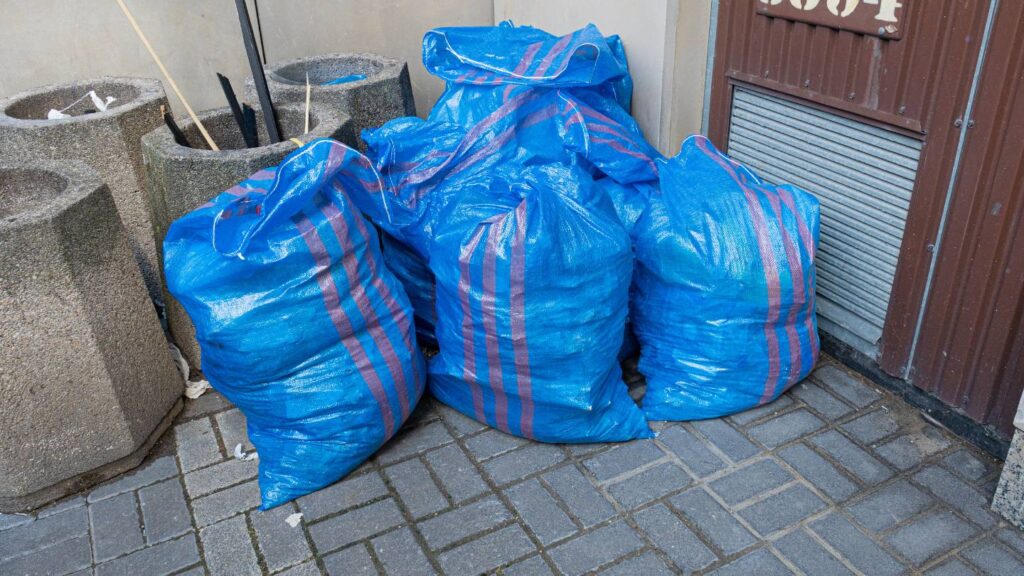One's health can be negatively impacted by constantly being exposed to filth. In addition to causing respiratory issues, it has been linked to the onset of other chronic conditions, such as inflammatory bowel disease. However, it has been suggested that early exposure to a dirty environment can reduce the risk of developing allergies. In addition, being in a dirty area can cause emotional and physical distress.
The World Health Organisation estimates that if we had healthier environments, we could avert nearly a quarter of the global burden of disease. It is estimated that in 2012 alone, air, water, and soil pollution killed 12.6 million people around the world. Realising the dangers of a dirty environment and taking preventative measures are essential for a healthy lifestyle.
Health Risks That Dirty Homes Can Pose
We all know that a dirty home isn't exactly the place you want to spend time in. The health risks associated with residing in a dirty environment are real. There are four ways in which a dirty house can affect one's health.
Respiratory Problems.
Dirt and clutter can make it harder for people with respiratory problems to breathe. Cluttered spaces are breeding grounds for allergens like dust mites and mould, making it difficult for people with asthma and allergies to breathe. Exposure to these triggers has been linked to asthma attacks and the development of allergies in some people. In addition, a dirty house is a breeding ground for bacteria and viruses that can spread illness.
Skin Infections.
Even your skin, the largest organ in your body, can become infected. The mould and bacteria that can be found in a dirty bathroom or kitchen can cause serious skin irritation. Living in a dirty environment has been shown to increase the likelihood of getting a skin infection by a factor of six.
Gastrointestinal Problems.
Unsanitary conditions are a common source of stomachaches. The inhalation of allergens like dust and mould can cause nausea and vomiting. Nausea, vomiting, and diarrhoea are just some of the symptoms of food poisoning that can result from improper food storage in a filthy home.
Mental Health Problems.
Concerns, fears, and frustrations increase on a regular basis in a cluttered, disordered home. Everyday stresses and worries are amplified when you come home to a dirty house.
The Effects of Living in an Unclean Environment

Living Room And Bedrooms
Dust can easily settle on the furnishings if they aren't regularly dusted. Free-floating debris like dust mites, pet dander, mould spores, and other allergens can cause health problems for you and your family. People with asthma and allergic rhinitis have a serious problem with this because it can cause an attack. When cleaning on your own, it's easy to miss a spot or two. In order to keep everyone healthy, hiring a professional cleaning service may be necessary.
Kitchen
Because of its proximity to both raw and cooked foods, the kitchen presents a unique set of hazards. E. coli, salmonella, and cyanobacteria are just a few of the food-borne illnesses that could spread through your home if you haven't been diligent about keeping your kitchen clean. Severe symptoms from these diseases may necessitate hospitalisation for a family member.
Unsanitary food can attract rodents and cockroaches, both of which can spread disease. To protect your family's health, it's best to have a professional cleaning service handle the end-of-tenancy cleaning for you.
Bathroom
It is crucial that you keep your restroom clean at all times. It's important to have a spotless bathroom because that's where you wash your body. But this is the dirtiest and most difficult to scrub. It's common knowledge that bacteria and intestinal parasites like worms thrive on bathroom surfaces and floors.
You can lessen your risk of contracting these parasites by keeping your bathroom (including the tub, shower, and toilet) clean on a regular basis. A deep cleaning by a maid service at least occasionally can eliminate bacterial hotspots and is highly recommended for safety.
Kinds Of Environmental Pollution Caused By Waste
Air Pollution
Pollutants in the air include things like soot and toxic gases. Carbon, nitrogen, and sulphur oxides predominate among them. The following are some causes of air pollution:
- The utilisation of fuels like coal, gas, and oil
- Smog caused by your cars' emissions
- Garbage pollution due to improper waste management at landfills
- Toxic off-gassing from plastics, paints, and other manufacturing processes Nuclear accidents and radiation spills
Land Pollution
Earth's surface is being degraded (rendered unusable) due to this type of pollution. There are two reasons for this, and a trash heap is one of them. Wasteful practices and resource overexploitation are major contributors to land pollution. Some common forms of land pollution are as follows:
- Garbage was strewn about at random along streets and highways.
- Spills of oil
- Polluting our natural areas with trash
- Debris or destruction brought on by destructive logging techniques
- Chemical fertilisers, fungicides, and pesticides
- Radiation leaks or nuclear mishaps
Garbage Pollution
Humans, waste collectors, and private companies responsible for trash disposal all play a role in contributing to the problem. Harmful bacteria spread in the environment, and unpleasant odours that become air pollution are the results of this type of pollution.
Parasites and bacteria can be spread to humans through contaminated water.
Beach Pollution
Waste products such as plastic bags, fishing nets, and cigarette filters are examples of beach pollution. The marine environment suffers when trash like this ends up there. Careless beachgoers who have a picnic or party and then leave their trash behind are often to blame.
Plastic Pollution
Plastic pollution consists of any plastic, hard or soft, that is not biodegradable and will remain on the earth for thousands of years or forever. It will degrade the soil's health and structure for all time.
Common Culprits To Consider

Mess promotes the growth of germs and bacteria. In order to keep your family safe and healthy, you should always be on the lookout for common sources of dirt in the home.
Pets
A dirty house is no place for your pets to play. Like humans, pets can experience health problems after ingesting dirt and debris. Pets can also be affected by allergies and other respiratory conditions. Fur and dander from pets can also cause unsightly messes to be tracked inside.
Animal fur's microscopic hairs have been known to get stuck in rugs and upholstery. Allergens like dust mites can thrive in this cellular buildup, which can trigger an allergic reaction in those who are vulnerable. You and your pet's well-being depend on a clean and orderly home. Dust, fur, and grime can be contained with regular vacuuming and sweeping. Allergens can be avoided by dusting regularly.
Carpeting
There are a lot of allergens and potentially dangerous bacteria that can be found hiding in carpets. Carpets are a breeding ground for allergens because of the warm, fuzzy surface that attracts and harbours germs. Maintaining clean carpets that don't pose any sort of health risk requires regular cleaning. If you wait to clean up a spill or stain, the mess will be much harder to get rid of.
Hidden Mold
It's commonly believed that a dirty home is necessary for mould to thrive there. Anywhere there's a source of water, mould can flourish. Under the kitchen sink, around the heating vents, and other damp spots can be breeding grounds for mould, so it's important to inspect these areas regularly.
If you find mould in your home, there are companies you can call to get rid of it quickly and safely. Do not risk your health by exposing yourself to mould for an extended period of time.
Beds, including mattresses, linens, and pillows. It's important to evaluate your sleeping situation if you have breathing problems like asthma, allergies, or anything else. Tiny creatures known as dust mites thrive in dirty environments and enjoy nothing more than spending the night in a soiled bed. The mites' waste contains allergens that can aggravate respiratory problems, and dead skin cells are a food source for them. Skin irritations are another symptom of dust mite infestation.
Sheets and pillowcases should be washed in hot water once a week, if not more frequently if you have a dust mite allergy. When vacuuming your mattress, use the brush attachment to get into the nooks and crannies. Let your pillows air out before covering them with a fresh pillowcase.
Air Ducts
Your home's air ducts are an area you should not ignore. Dust, pet hair, pollen, and other allergens can accumulate in these ducts over time. Therefore, the air in your home can become contaminated as it circulates through the ducts, causing health issues and an untidy environment.
The recommended frequency of professional air duct cleaning, according to the experts, is every three to five years. But if you have smokers in the house or live in a particularly polluted area, you may need to clean them more frequently. Remember to regularly replace your heating and cooling system's filters.
Are Ambient and Household Air Pollution Health Risks Similar?
The effects on health from breathing in a polluted air mixture, whether outside or inside the home, vary with the specific pollutants present and their concentrations. However, due to their similarities in composition, the health risks and disease pathways associated with exposure to ambient and household air pollution are often the same. One type of air pollution that has been linked to health problems and is present in both outdoor and indoor air is fine particulate matter.
Many common household fuels and technologies also contribute to air pollution, posing additional safety risks. Injuries from collecting fuel can range from musculoskeletal damage to violence and animal bites to burns and poisonings (from ingesting kerosene).
The number of deaths and disabilities blamed on air pollution likely under-represents the true extent of the problem. Because only health outcomes (such as stroke, ischemic heart disease, COPD, pneumonia, and lung cancer) for which there is high certainty in the epidemiological evidence are included in WHO estimates, these estimates are likely conservative.
FAQs About Rubbish Removal
Exposure to high levels of air pollution, respiratory infections, heart disease, lung cancer, respiratory problems, and stress are some of the health risks associated with living in a dirty environment.
Mould can cause a variety of health problems, including respiratory problems, allergies, and asthma. Mould spores can also cause skin and eye irritation, and in some cases, exposure to mold can lead to serious health problems, such as lung infections.
Yes, living in a dirty environment can cause stress, anxiety, and depression. It can also affect your quality of sleep, which can in turn have negative effects on your mental health.
According to the hygiene hypothesis, exposure to a diverse range of microbes, pollen, and other microscopic things in the environment can boost the immune system. However, living in an excessively dirty environment can have the opposite effect, and can weaken the immune system, making you more susceptible to illnesses and infections.
Keeping your home clean and free of dust, mold, and other pollutants is the best way to protect yourself from the health risks associated with living in a dirty environment. Maintaining good hygiene practices, such as washing your hands regularly, can also help protect your health.
Conclusion
According to the World Health Organisation, we could prevent over a quarter of the global burden of disease if we had healthier settings. Disorganisation and dirt may wreak havoc on your health in many ways, including your lungs, skin, gut, and head. Asthma attacks and the development of allergies, as well as the spread of germs and viruses, have all been related to exposure to these triggers. Maintaining a healthy lifestyle requires regular preventative care. The effects of living in a filthy environment, including dust, food-borne illnesses, rats, and cockroaches, are the primary focus of this text.
The kitchen has its own special hazards and is a magnet for pests like rodents and cockroaches, so keeping it clean is essential. Furthermore, it is crucial to always keep the restroom clean because germs and intestinal parasites flourish there. Finally, having a maid service perform a thorough cleaning at least occasionally is essential for removing potential breeding grounds for bacteria.
Trash, oil spills, logging debris, chemical fertilisers, fungicides, insecticides, radiation leaks, and nuclear accidents all have a role in degrading the ecosystem. Humans, waste collectors, and private companies all contribute to the spread of bacteria and foul odours through improper rubbish disposal.
Plastic bags, fishing nets, and cigarette filters are just some of the trash that ends up on beaches. The problem with plastic waste is that it takes thousands of years, if not forever, to decompose. Fur and dander from pets, as well as dust mites, are common causes of filth in the home. Maintaining clean carpets requires frequent maintenance, including vacuuming, sweeping, and dusting. It is crucial to routinely investigate these places because hidden mould is a widespread problem in homes.
Every week, use hot water to clean the bedding and vacuum with a brush attachment. Dust, pet hair, pollen, and other allergens can accumulate in air ducts, so it's important to clean them periodically. If you have smokers in the house or you live in a particularly polluted location, you may need to have your air ducts cleaned more frequently than every three to five years.
The dangers and illness mechanisms associated with both outdoor and indoor air pollution are comparable. Air pollution is a major public health concern, and many popular household fuels and technology are significant contributors. Because WHO only includes health outcomes for which there is great assurance in the epidemiological evidence, their estimates are likely on the low side.
Content Summary
- Living in a dirty environment can negatively impact one's health.
- Exposure to filth can cause respiratory issues and chronic conditions like inflammatory bowel disease.
- Early exposure to a dirty environment may reduce the risk of developing allergies.
- Dirty areas can cause emotional and physical distress.
- The World Health Organisation estimates that healthier environments could avert a quarter of the global burden of disease.
- Air, water, and soil pollution caused 12.6 million deaths worldwide in 2012.
- Respiratory problems can be caused by dirt and clutter in the home.
- Cluttered spaces are breeding grounds for allergens like dust mites and mould.
- A dirty house can be a breeding ground for bacteria and viruses.
- Skin infections can be caused by the mould and bacteria present in a dirty environment.
- Living in a dirty environment increases the likelihood of getting a skin infection by a factor of six.
- Unsanitary conditions can lead to gastrointestinal problems and food poisoning.
- Nausea, vomiting, and diarrhea are symptoms of food poisoning from improper food storage.
- Concerns, fears, and frustrations are amplified in a cluttered, disordered home, affecting mental health.
- Dust and clutter in living rooms and bedrooms can cause respiratory problems and allergies.
- Pets can experience health problems from ingesting dirt and debris in a dirty home.
- Carpets can harbour allergens and potentially dangerous bacteria.
- Hidden mould can thrive in damp spots in the home and should be regularly inspected.
- Dust mites thrive in dirty beds and can cause respiratory problems and skin irritations.
- Air ducts can accumulate dust, pet hair, pollen, and allergens, affecting indoor air quality.
- Ambient and household air pollution have similar health risks and disease pathways.
- Fine particulate matter is a common air pollutant present in both outdoor and indoor air.
- Household fuels and technologies contribute to air pollution and pose additional safety risks.
- Injuries from collecting fuel can range from musculoskeletal damage to violence and burns.
- The number of deaths and disabilities attributed to air pollution is likely underestimated.
- Health outcomes related to stroke, heart disease, COPD, pneumonia, and lung cancer are included in WHO estimates.
- Keeping a spotless bathroom is crucial to avoid bacterial hotspots and intestinal parasites.
- Garbage pollution, including improper waste management, contributes to air and land pollution.
- Beach pollution from plastic waste affects the marine environment.
- Plastic pollution is a long-lasting environmental problem that degrades soil health.








